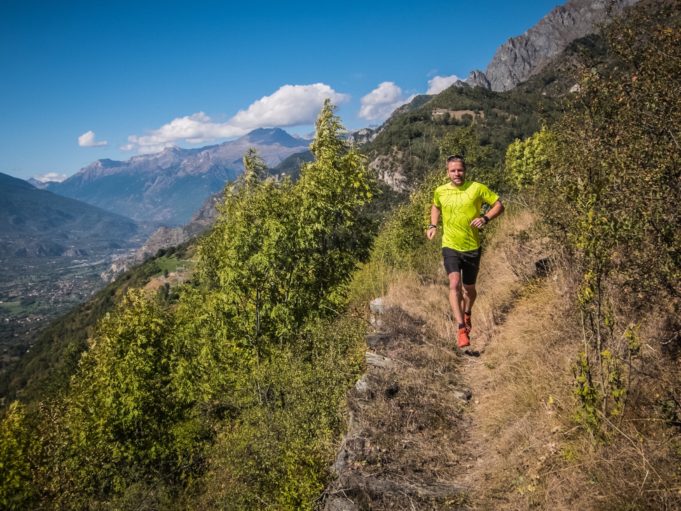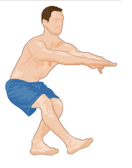Henrik Leth Jorgensen is an adventure racer and ultra runner, former Danish national orienteering team member, and coach of athletes from beginner to national team level. Here he provides tips on three areas you can improve to take your performance to the next level.
I have done a lot of running through my life, but I have always tried to achieve the maximum with the least effort. You cannot be a good runner without training, but if you train smart, you can avoid injuries and you don’t need to put in the huge amount of hours like a professional.


Tip 1: Strength training
A simple way of taking your running to a higher level is by adding some strength training. Stronger legs and body will lower the risks of injuries, make you recover faster and thereby enable you to train harder.
When running on trails your steps are not the same through the entire run. Your stride needs to continually adjust to the terrain, and it is therefore crucial to have legs that can handle this variation.
Jumps
A simple way of obtaining strong trail legs without needed to find trail is by adding jumps to one of your weekly slow runs. These are best performed on slight uphills roads, but can be on the flat if necessary. Warm up by doing 20 steps of walking lunges – long steps where the knee on the backmost leg is touching the ground before taking the next step.
Next do 10 jumps from the left foot, followed by 10 jumps from the right and finally 10 jumps taking off from both feet.
When doing the jumps focus on jumping as far ahead as possible, and having as little contact time with the ground as possible. Take notice of how far you could jump, and make an competition with yourself to improve this length during the next months. Repeat one more time, and the run the rest of your training.
Training at home
Strength training at home can be done without a warm up and can be done barefooted.
One leg squats add stability to your knees, making it more safe to run downhill, and reducing the risk of runner’s knee. Stand on one leg, let the other be stretched out in front of you, and lifted slightly of the ground. Bend the leg you are standing on, until the knees angle is about 90 degree.


Do 10 squats on each knee, take a short break and then repeat one more time. The slower you can squat the better.
Calf raises also condition your muscles well for trail. Stand on a doorstep or something slightly raised from the ground. Stand on your toes and lower your heels as far down as possible and then lift your heel as high as possible. Do 10 on each foot, take a short break and then do another 10
Tip 2: Progress slowly
Letting your body adapt to your training is the most crucial part of being active long term. Progressing too fast will often lead to injuries.
Raising the frequency of training is better than just doing longer training sessions. But as the last tip will tell you, there are many ways to reach next level.
One easy rule to follow is the “10% rule”. In general, each week shouldn’t contain more than 10% extra training than last week. And each month shouldn’t contain more than 10% extra training than the last month.
If one training in a week is much longer than usual, you should cut down on another training that week, so your total training load still fits in the rule.
Think of your training as the product of multiple factors:
Training load = training frequency x length of training x intensity of each training
So if you increase the intensity of your training, you should adjust either the length of the training or the number of training sessions each week.
Tip 3: Variation is key
To increase the effectiveness of your training, you should do a mix of training styles. If you do four runs per week, a good training regime is to do one long session, one short easy training session, one speed session, and then let the fourth vary from week to week. For example one week you do one extra long run, in an other you do one extra speed session, another time you add in hill reps.
This fourth session can also be the one you use for “pushing the limits”. Once a month, or once every 2-3 weeks, let this session be something extraordinary; longer, steeper or faster than ever before. Schedule your record breaking training a month in advance, so you use them as short term goals. You could also use a shorter race as this special training session for your main race goal.



